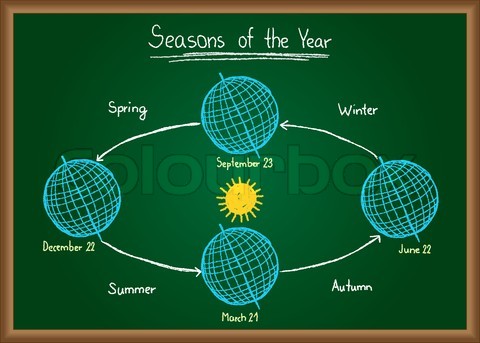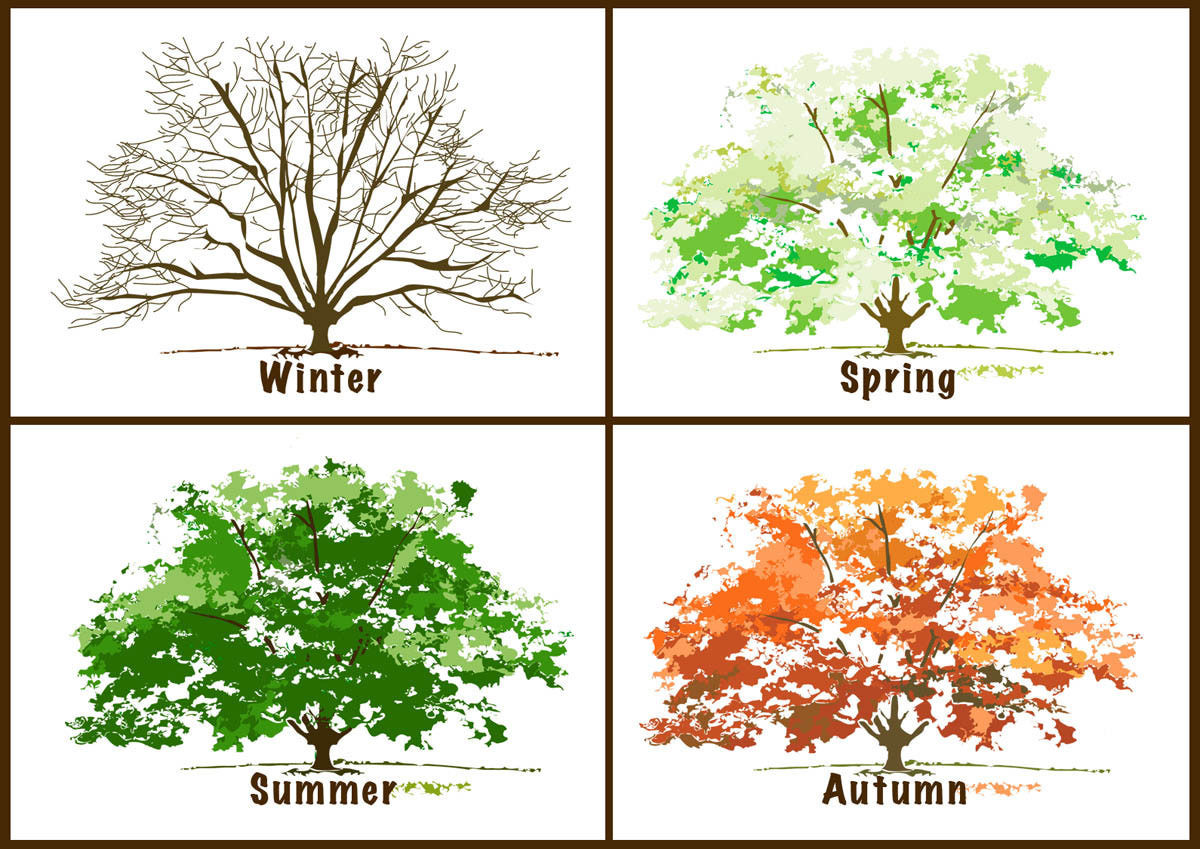
| Home | Spring | Summer | Autumn | Winter | Links |
-WHAT IS A SEASON-
A season is a period of time throughout the year that is distinguished by special climate conditions. The four seasons-spring, summer, autumn, and winter- follow one another regularly. Each of the seasons has its own light, temperature, and weather patterns that repeat yearly.
-WHAT CAUSES A SEASON-
Seasons are largely due to factors surrounding the Earth's tilted axis as it revolves around the sun. Seasons occur because Earth is tilted on its axis relative to the orbital plane, the invisible, flat disc where most objects in the solar system orbit the sun. Earth’s axis is an invisible line that runs through its center, from pole to pole. Earth rotates around its axis.

The four-season year is typical only in the mid-latitudes. The mid-latitudes are places that are neither near the poles nor near the Equator. The farther north you go, the bigger the differences in the seasons. Seasons have an enormous influence on vegetation and plant growth. Winter typically has cold weather, little daylight, and limited plant growth. In spring, plants sprout, tree leaves unfurl, and flowers blossom. Summer is the warmest time of the year and has the most daylight, so plants grow quickly. In autumn, temperatures drop, and many trees lose their leaves.
Places near the Equator experience little seasonal variation. They have about the same amount of daylight and darkness throughout the year. These places remain warm year-round. Near the Equator, regions typically have alternating rainy and dry seasons.

 |